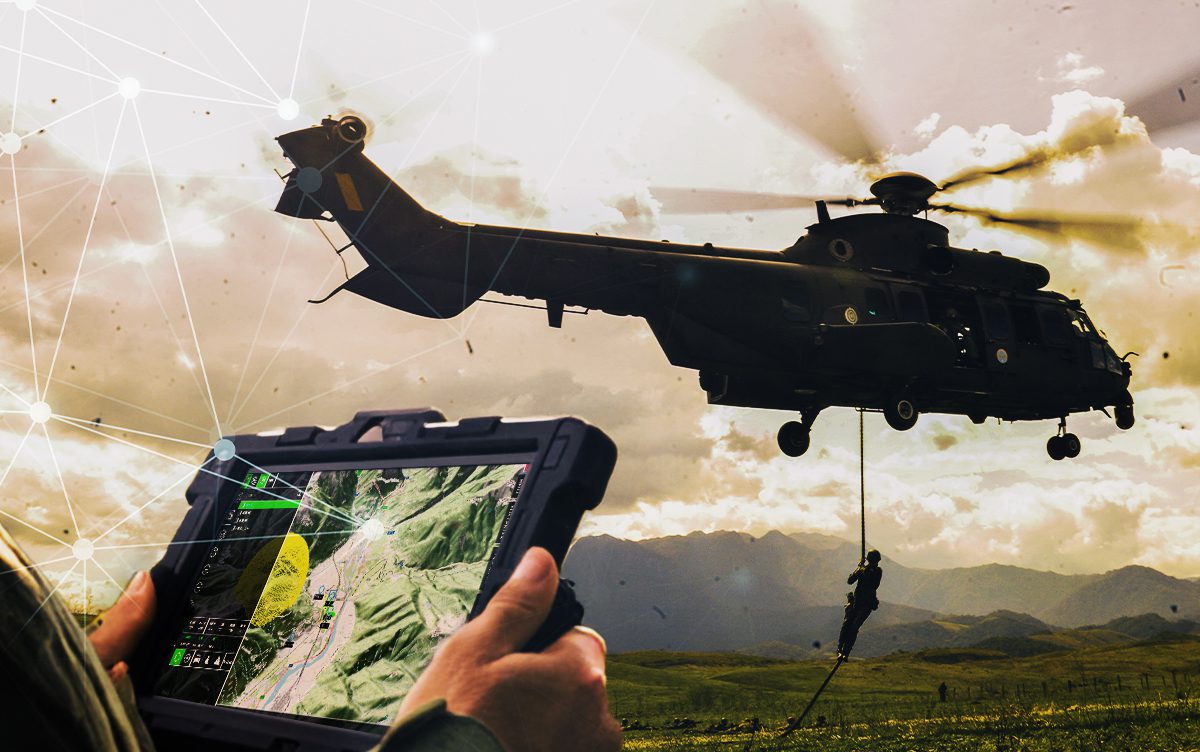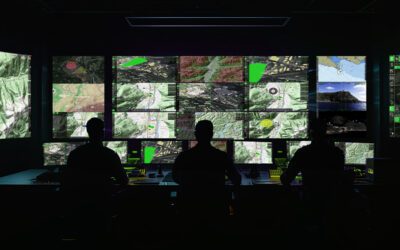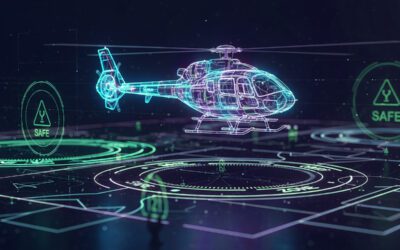The use of edge processing and cloud computing technologies is revolutionising ISR operations and battlefield decision-making in an unprecedented way. Tactical edge computing isn’t just making the assessment of data and the military response more cohesive and faster but is potentially saving lives in the process.
While tactical edge cloud computing stays out of the spotlight in general, in military circles, it is accepted as one of the most innovative and proactive data-gathering and analysis systems currently in use. Its real-time applications are almost limitless, especially when combined with AI technology and Augmented Reality systems.
Tactical edge computing is proving to be so integral to modern military strategy and decision-making that its use is increasing exponentially. It is transforming the way military leaders assess situations and deploy their resources more effectively.
In this article, we’ll examine tactical edge computing and its applications in more detail, providing an overview of its benefits and its role in the future of the 21st-century military. We’ll discuss edge computing technology and investigate how leading innovators like FlySight’s OPENSIGHT Mission Console and turnkey Enhanced Reality solutions fit into the future of edge processing.
What is edge computing?
Edge computing technology refers to computer resources and data processing capabilities that are deployed close to the source of the data generation. These are often remote or hostile locations. The technology is, quite literally, on the tactical edge of the theatre, whether that’s a battlefield, at sea or in the air. By its nature, edge computing technology needs to be compact, powerful and adaptive, allowing operators to make mission-critical real-time decisions.
The ability to analyse data in the field, for example, from drones, sensors, and other devices, and then compare it with stored data held in the cloud immediately gives the operators a tactical advantage. Part of the ‘Internet of Battlefield Things’, it creates a fast conduit of information that can be analysed, collaborated on, and then acted upon. Its location on the ‘edge’ of the active zone makes it faster, more efficient, and immediately implementable.
How does it differ from traditional cloud computing?
The main differences between edge processing and traditional cloud systems are how and where the data is processed. With edge processing, the data is collected and processed closer to the source, referred to as the ‘edge’ of the network, from equipment such as drones and sensors.
Cloud computing sends information and data to central servers that are far from the original source. Here, it’s stored and processed later.
How edge computing can be applied to tactical environments
Edge computing is the perfect partner for tactical environments. Due to the nature of these locations, which are often remote, hostile, and resource-constrained, edge computing technology enables the extrapolation of data at the source. The ability to make real-time decisions using data from sensors and cameras mounted on drones means that operators do not need to rely on remote servers or cloud connectivity, especially when a stable connection may not always be possible.
Tactical edge computing is particularly well suited to autonomous systems, empowering them to analyse live feeds and detect threats or targets in real time. The requirement for a constant dialogue between the system and central command is negated, although, as with all AI systems, a human operator has to be in the link at some juncture.
The benefits of tactical edge computing
Tactical edge computing has a myriad of advantages. The primary advantage is reduced latency. Because the system operates on the edge of an active zone rather than at a separate and sometimes very distant location, it enables faster data processing to facilitate split-second military decisions.
Edged computing technology also streamlines operational procedures, enhancing efficiency and ensuring resources are allocated more effectively. This can happen in real time without the need for extended communications between the field operators and the command base. This doesn’t mean that field operators (or autonomous systems) have unconstrained control over their actions – there must always be a chain of command in a military situation. But it does mean that within operating guidelines, decisions for allocating resources on the ground can be made more quickly.
Reducing the ‘back and forth’ between field operators and a control base by using tactical edge computing systems can improve security and data sovereignty, keeping sensitive information local to reduce risks and the potential for hacking from hostile outside forces. Local processing means critical data doesn’t depend on an internet connection to be analysed, eliminating potentially unsecured links and protecting mission-sensitive data.
Tactical edge processing also offers a certain degree of resiliency in disconnected environments. Because it doesn’t rely on extended connections, it can continue functioning, even in GPS-denied or communication-compromised scenarios.
Key Applications of Edge Computing in Operations
The shorter the distance information has to travel and the fewer the number of access points, the faster secure, mission-critical data can be used to formulate effective mission decisions. Reducing data latency improves response times and allows for quicker decision-making.
While we’ve discussed the advantages of tactical edge computing’s proximity to the field of operations, it also provides the option of linking to other resources and integrating data from multiple sources via the cloud. Tactical edge cloud computing amalgamates existing data from satellites, ground sensors and other resources such as reconnaissance drones to create multi-layered analysis to give operators a more accurate and in-depth understanding of their terrain.
Systems such as FlySight’s innovative OPENSIGHT Mission Console and other turnkey solutions such as Target Acquisition and NATO STANAG 4607 Ground Target Tracking Enhancement introduce AI-assisted programming that can refine both existing data and real-time collection into a cohesive strategic roadmap.
Tactical edge computing can also help operators improve operational decision-making in complex scenarios by accessing the latest data and making more informed decisions.
The use of autonomous drones is becoming more commonplace in battlefield situations. While human operators are still a key link in the chain, these drones are now far more capable of adapting surveillance or target acquisition protocols based not just on machine learning from existing data but also by updating their parameters with additional location data gathered in real time. This makes them more effective and efficient.
The limited or certainly more controllable aspect of multi-access edge computing and the fact that much of the gathered data is being processed and used close to the source means that there is a greater degree of cybersecurity protection. The greater the distance sensitive information has to travel and the more times it has to go back and forth for analysis, verification, and approval for action, the more at risk it is to outside hackers. Keeping the data close to the original source eliminates many of the weak links in the chain, ensuring sensitive information stays relatively secure.
However, there is a flip side to that particular coin once an edge computing system becomes linked to an outside source such as the cloud. Immediately, integration with other systems turns what was technically a closed system into an open one, increasing the chances of data breaches. So, tactical edge cloud computing needs to be considered within a well-defined and secure framework. Using a Mission Console such as OPENSIGHT to access additional data is one of the safest ways to ensure mission-critical data gathered by edge computing is not compromised.
The future of tactical edge computing
While an extremely advanced system already, there is plenty of opportunity for this technology to evolve for use in tactical operations in the future.
As the technology continues to advance, there is plenty of scope for improvements in operational efficiency. The key is to ensure that the system can be integrated into user-friendly and familiar hardware, making it intuitive and easy to operate even in a confined space such as a helicopter cockpit. The OPENSIGHT platform demonstrates how systems can be synergised and customised for military use, SAR or surveillance. This helps to improve overall operational efficiency by providing not only data gathered in the immediate vicinity, but also linking it seamlessly and securely to outside sources. OPENSIGHT, with its Enhanced Reality foundation and deep machine learning capabilities, also demonstrates how flexible a system such as this can be in a military theatre.
Watch our informative videos to learn more about the OPENSIGHT platform. Or contact us to learn more in complete confidence about OPENSIGHT and how it can be customised to suit your exact requirements. Call us now for details.




